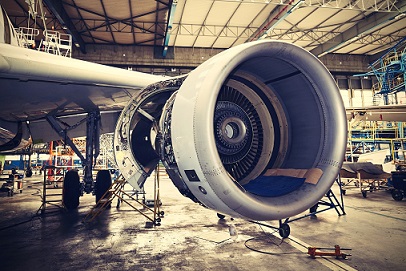Cutting costs in aircraft repair and maintenance

Related topics
Innovation Transport Societal Challenges Smart, green and integrated transport Denmark Germany Italy Spain United Kingdom United States of Americadate: 18/05/2015
Project: Future RepAIR and Maintenance for Aerosp...
acronym: REPAIR
See also: CORDIS
Maintaining and repairing complex machines like engines is an expensive and complex process and better technology is required to make the industry more competitive. The main goal of the RepAIR project is to remake and rework spare parts instead of buying new ones, reducing costs and saving time in aircraft maintenance and repair.
The team is analysing existing ‘maintenance, repair, and overhaul’ (MRO) procedures for spare parts to streamline the overall process. One key weapon in making MRO more efficient could be additive manufacturing technologies or AM (a form of industrial 3D printing), where components are constructed layer-by-layer under computer control rather than through the traditional "subtractive" machining of metal blocks.
Cutting costs with automation
“More automation means lower personnel costs and as a result, lower MRO costs,” says RepAIR project coordinator Rainer Koch of Paderborn University in Germany. “And by repairing instead of replacing spare parts, less capital is locked up,” he adds.
In fact, according to Koch, RepAIR could reduce MRO costs for complex spare parts by 30%, and turnaround time by 20%, by using innovative technologies such as AM.
AM could also help lower the 'buy-to-fly' ratio of materials, reduce emissions of harmful chemicals as it cuts oil use and, crucially, allow for the constant and rapid manufacturing of complex parts.
Significant weight savings, resulting in lower fuel consumption by aircraft, are also foreseen. And shorter time spent on product development, combined with lower operational costs, should translate into more affordable flights for the consumer.
To ensure the sophisticated MRO production process runs smoothly, the team is adapting an existing decision support tool as well as a production planning and control. This will enable AM to be integrated into current workflows and allow spare parts to be repaired individually or in batches. Spare parts could also be produced on demand while taking various demands into account, such as technical requirements, supply chain issues and costs.
Swelling a skilled workforce
The technical nature of the repair and maintenance industry already demands highly technical staff. But with the advances projected under RepAIR, workers will need to be even more highly skilled. All this helps preserve and expand Europe's reputation as having an extremely qualified workforce, making the continent more attractive to future high-tech investment.
'Taking into account the certification requirements, such processes could start being introduced to the aviation industry in about three to four years,' says RepAIR project manager Jens Pottebaum, also of Padeborn University.
